MARKET OVERVIEW
Sometime in the near future, the Global Hydraulic Demolition Machines market and its industry are going to galvanize this ancillary construction space. Increasing urbanization and the coming up of large infrastructure projects in this space naturally increase the demand for sophisticated demolition solutions. These machines, at the premise of advanced hydraulic technology, would efficiently dismantle such structures while ensuring precision and minimizing environmental degradation.
Several technological advancements are expected to develop within the Global Hydraulic Demolition Machines market. Manufacturers are focused on working on a series of machines that are stronger, more efficient, and versatile to suit changed construction industries. These machines will be designed in a manner that allows them to handle a wide range of demolition tasks—from concrete structure demolition to deconstruction of steel frameworks. Further integration with the use of smart technologies and automation will enhance the capabilities, permitting remote operation and enhancing safety standards.
One of the major drivers of the Global Hydraulic Demolition Machines market will be the rising focus on sustainability and environmental conservation. With growing interest and continuous effort by a government or any organization in reducing their carbon footprint, construction industries will also turn greener. Hydraulic demolition machines, with precision and reduced emission, will fit perfectly into the scene. They can deliver controlled demolition processes, eventually reducing dust and noise pollution and promoting the recycling of construction materials.
Increasing investments in infrastructure development across emerging economies will also help fuel growth in the market. Ambitious construction projects involving building highways, bridges, and commercial complexes are on the cards in countries in Asia, Africa, and Latin America. As these countries seek efficient solutions to handle large-scale demolition tasks, demand for hydraulic demolition machines will surge. This will be complemented by the growth in adoption of mechanized demolition methods within developed regions where needs for speed, safety, and cost continue to drive demand for advanced hydraulic machines.
The Global Hydraulic Demolition Machines market will also be driven by the deteriorating infrastructure in most parts of the world. Given the fact that buildings, roads, and bridges are achieving their cycle ends, requirements for safe, efficient demolition solutions will override all other considerations. The hydraulic demolition machine will prove to be the key management tool in the complexity of deleting old structures while salvaging as much material as possible for reutilization. This partially defines a 'circular economy,' wherein resources are conserved, and turned over to lighten loads on natural resources.
Hardware improvement alone will not see the Innovation in hydraulic demolition machines come to an end. Optimization of demolition processes will require software solutions and data analytics in equal measure. Manufacturers will develop intelligent systems that can analyze structural data to predict the best demolition methods and ensure precision during execution. It is such integration of technology that will further enhance the efficiency and effectiveness of hydraulic demolition machines, hence making them one of the most indispensable tools in the construction industry.
This would include the increased awareness and adoption rate of these safety standards in the construction sector. As the regulatory bodies grow stricter about their defined safety guidelines, hydraulic machines would be increasingly used by contractors for greater control and minimizing risks to workers on these construction sites. About these hydraulic demolition machines, there will also be improvements to the features concerning safety installations, such as real-time monitoring, auto-shutdowns, and ergonomic designs that will ensure the well-being of operators and personnel onsite.
The Hydraulic Demolition Machines market and its industry will soar to great heights in times not too far ahead. Enriched with technological innovations, sustainability programs, and infrastructure development, such machines are sure to sweep through the demolition scene. Hydraulic demolition machines would be the foremost personalized equipment in the construction industry, with precision, efficiency, and eco-friendliness to keep measures up for the changing world demands.
Global Hydraulic Demolition Machines market is estimated to reach $7,981.3 Million by 2031; growing at a CAGR of 7.2% from 2024 to 2031.
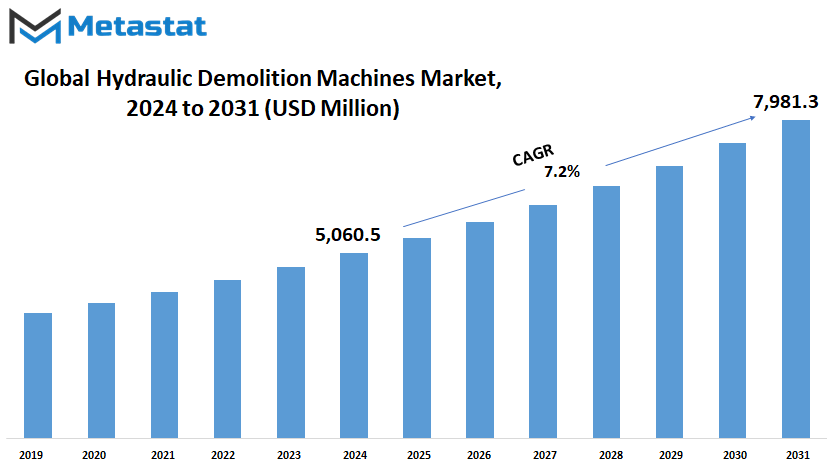
GROWTH FACTORS
In this respect, the Global Hydraulic Demolition Machines market is projected to attain huge growth in the approaching years. This will be a direct result of increasing urbanization and related infrastructure developments. The expanding cities—to which old structures are needed to give way—are demanding efficient demolition solutions. This market will benefit from developments in hydraulic machinery in terms of efficiency, precision, safety, and other parameters, pushing market growth.
Hydraulic demolition machines are becoming imperative because difficult tasks can be done with a high grade of accuracy and precision with less manual intervention. Advanced technologies in these machines are going to reduce their operational time immensely. This sector is surely going to evolve in terms of precision so that the demolition work is minimized in terms of time and surrounding area disruption. This will be very vital as population in the urban centers continues to rise and the demand for demolition solutions that are both safe and efficient continues to gain momentum.
Challenges
Despite these developments presenting an optimistic outlook, markets remain riddled with numerous challenges. One key challenge is that in hydraulic demolition machines, owners incur a huge initial investment followed by high maintenance costs. These costs may be difficult to justify for many small construction firms that make up a large share of the market. Furthermore, the strict environmental regulations and concerns related to noise pollution also are most likely to limit the usage of such machines in urban areas. As governments and other environmental agencies continue putting pressure on greener and quieter constructions, the industry will have to adapt to such demands if it is to continue growing.
Yet, these challenges are also opportunities for innovation. More compact, environmentally sensitive, and versatile hydraulic demolition machines will find the path toward overcoming these barriers. Machines that work in confined spaces with fewer emissions, noise, and dust will hold a niche in the market. This will not only be vital for compliance with environment v/datatables but on its part will foster an expanded market base including projects and clients of diversity.
The future of the Global Hydraulic Demolition Machines market shall be based on how the sector can innovate and adapt to the changing demands. Powered by technological advancements and the successful handling of worries about environmental degradation, markets come with new Riseoppurtunities. A few companies that are investing in research and development to come up with latest-generation hydraulic demolition machines would attain a better foothold for capturing these trends.
With rapid urbanization and infrastructure development, the Global Hydraulic Demolition Machines market is going to experience immense growth. Improved technology inevitably is going to accelerate this growth in the long term; however, there is a challenge of costs and environmental concerns standing in the way. Therefore, it is such machines that will be efficient, precise, and environment-friendly that will open up new opportunities and long-term expansion for this market.
MARKET SEGMENTATION
By Type
By type, the global hydraulic demolition machines market is segmented into uni-ram type, top bracket type, box bracket type, side bracket type, and other types. Hydraulic demolition machines are highly efficient and versatile in all demolition application areas, and are projected to bring about a sea change in construction Industry in the coming few years.
These machines, with hydraulic power and superior execution capabilities, will form the core of structure demolition, regardless of the scale. The Uni Ram Type with its compact design and high force output will find a niche in works requiring agility in maneuverability. The Top Bracket Type, known by virtue of rugged build and high capacity in lifting, shall acquire dominant space in heavy demolition works.
Advancements in hydraulic technology will continue to push the boundaries with such machines in times to come. Increased efficiency and eco-friendliness will make them even more widely adopted for construction projects worldwide. A smart technology infrastructure that allows real-time monitoring and corresponding process optimization of demolition processes will make processes much safer and more operationally efficient.
Market trends show growing demand for demolition machines that can handle very diversified environments and materials. With its design criteria of stability and strength, the Box Bracket Type will be outstanding in demolishing large-scale buildings and reinforced concrete structures. In the same way, the Side Bracket Type will also fit into projects that desire dismantling and controlled demolition techniques on account of its versatility in demolition angles and reach.
Demolition equipment will continue to evolve with various construction techniques that may be invented. Advancements in material science and engineering will lead to the production of lighter, stronger components that will enhance the efficiency and life expectancy of hydraulic demolition machines. Future developments could be geared toward enhancing the automation and remote operation capabilities of demolition equipment to further cut down on manual labor content.
By Application
In doing so, one also needs to understand the application segmentation trajectory en route to understanding the Global Hydraulic Demolition Machines market. This market shall, hence, remain closely linked to other industries such as mining, waste recycling and demolition, snow removal, landscape maintenance, and others. Each application area would drive specific demands and innovations within this market.
Hydraulic demolition machines will accordingly have huge potential in the mining industry in both effectiveness and safety. The machines would break rocks and debris that may hamper the smooth running processes of mining processes. Advanced technologies such as automated controls and real-time monitoring fashioned out of them will lend more utility to mining applications. The development, therefore, will clearly make procedures easier and reduce overall downtimes in order to increase productivity.
For the waste recycling and demolition fields, hydraulic machines will continually upgrade to meet regulations that become more stringent and an increasing need for more sustainable practices. These machines will be working around takedown and processing—integral to worldwide recycling efforts. Future advancements might involve improved sorting and boosted durability to deal with vast streams of waste effectively.
It is going to introduce innovation within snow removal and landscape maintenance, particularly focusing on the improvement of operational efficiency while reducing the impact on the environment. The demolition machines adapted for these hydraulic applications will be strongly designed to bear the worst weather conditions, fitted with attachments that allow them to be used in certain operations such as snow plowing, tree stump removal, and land clearing. All this versatility serves a variety of seasonal and landscaping needs.
The Others category embodies a wide range of applications wherein hydraulic demolition machines will find a place in niche applications, including construction site preparation, infrastructure development, and disaster response efforts. Further developments in this sector could look towards customization options and adaptability to the specific operational challenges posed by these varied industries.
|
Report Coverage |
Details |
|
Forecast Period |
2024-2031 |
|
Market Size in 2024 |
$5,060.5 Million |
|
Market Size by 2031 |
$7,981.3 Million |
|
Growth Rate from 2024 to 2031 |
7.2% |
|
Base Year |
2022 |
|
Regions Covered |
North America, Europe, Asia-Pacific Green, South America, Middle East & Africa |
REGIONAL ANALYSIS
Now, while talking about the regional dynamics of the Global Hydraulic Demolition Machines market, it gives significant portions to geographical segmentation. The markets include North America, Europe, Asia-Pacific, South America, and Middle East & Africa, all of which contribute differently to the growth trajectory.
North America, involving the United States, Canada, and Mexico, acts unequivocally as a technological innovation and infrastructure development hub. A strong construction sector in the region and unabated urbanization projects will continue to drive the demand for hydraulic demolition machines. Investments made in sustainable urban planning and redevelopment initiatives will further bolster the market expansion.
Europe, with major economies consisting of the UK, Germany, France, Italy, and others in the region, is a mature market witnessed by strict regulatory frameworks and a high focus on environmental sustainability. The adoption of advanced demolition technologies and initiatives by these governments toward eco-friendly construction methods would act as a driver for the market in the region.
The Asia-Pacific region is an emerging dynamic growth engine for the Hydraulic Demolition Machines market, with the charge being led by countries such as India, China, Japan, and South Korea. Due to rapid industrialization and urbanization, it is foreseen that residential, commercial, and industrial construction infrastructure will rapidly accelerate in growth in the near future.
South America represents a growing market, primarily due to increasing investments in public works—namely, infrastructure and residential projects—with Brazil, Argentina, and others. Reviving efforts for economic recovery and governmental incentives for the redevelopment of urban areas will drive the demand for hydraulic demolition machines in the region.
Last but not least, the Middle East & Africa region, featuring GCC Countries, Egypt, South Africa, and others, would see stable growth, aided by infrastructure development projects across transportation, energy, and commercial construction sectors. Improving urbanization rates and rising investments in smart city projects would thus provide the right conditions for the market to grow.
Regional analysis of the Global Hydraulic Demolition Machines market speeds up multiple growth opportunities from different parts of the world. It is owing to the development and expansion of the construction and infrastructure sectors that orders for advanced demolition technologies would increase, thereby driving innovation and market development.
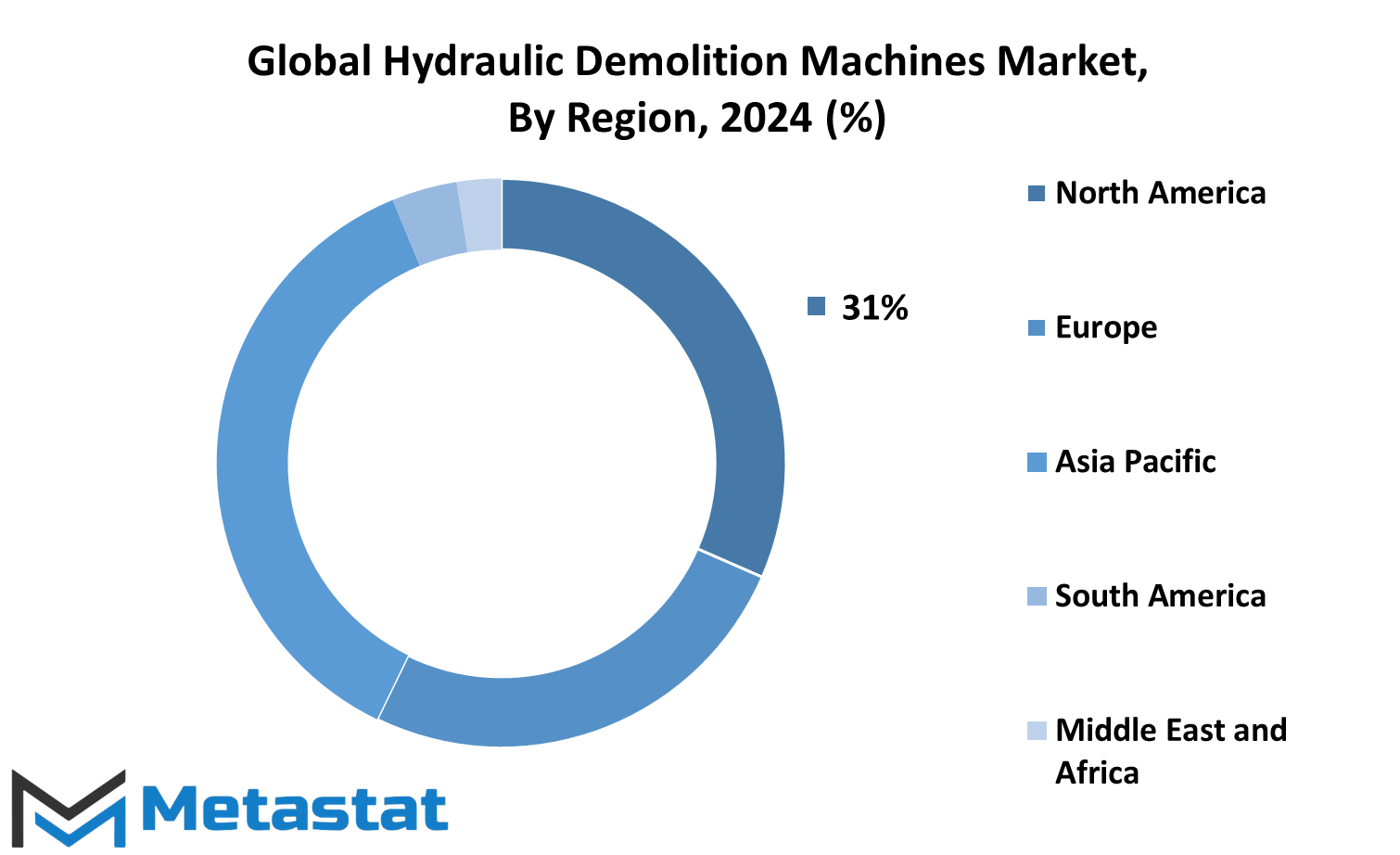
COMPETITIVE PLAYERS
Competitive dynamics mold industry landscapes and set market trends. Looking ahead, key players are set to drive significant developments and innovations in this sector of the Global Hydraulic Demolition Machines market.
Leaders at the front include established names such as Epiroc, Volvo, and Caterpillar Inc., all of whom have robust portfolios and a global reach. Such industry giants will leverage technology to better machine efficiency and operational capabilities. For example, Volvo and Caterpillar Inc. are thus focusing on incorporating advanced automation and IoT solutions into their demolition machines for enhanced accuracy and operational safety.
Adding to these heavyweights, some emerging players like Hammer Srl and Brokk AB have also been doing some significant work in the domain. Such companies come up with innovative and compact solutions that turn out to be powerful demolition tools and meet the growing demand for versatility and sustainability in construction techniques. For example, Hammer Srl is working on eco-friendly hydraulic breakers to cut down on noise pollution and carbon emissions to global environmentally friendly standards.
Looking ahead, further technological innovation will lie at the very core of the ability to compete in this industry. Several companies like Hitachi Construction Machinery Co., Ltd. and Doosan Infracore Co., Ltd. continue increasing R&D investments to introduce state-of-the-art demolition machines with advanced attributes like AI-driven predictive maintenance or even an autonomous operation capacity. This not only improves operational productivity but also minimizes downtime, hence optimizing overall project timelines and costs.
The market is also increasingly viewed as the venue for 'green' solutions. Major firms such as NPK Construction Equipment, Inc. and Hyundai Construction Equipment are working on electric and hybrid demolition machines. The key rationale behind these corporate steps seems to bring companies under dual focus in terms of regulatory compliance on one hand and customer demand regarding sustainability in the construction sector.
In a nutshell, the competitive scenario of the Global Hydraulic Demolition Machines market comprises a mix of traditional households and new entrants comprising innovative aggressors. The continuous boundary-pushing through technological innovation and sustainable solutions that these industry players are actively pursuing sets up the industry for rampant and transformative growth over the next few years. The perceptively evolving industry in this fashion is bound to set new benchmarks in demolition efficiency, safety, and environmental responsibility worldwide.
Hydraulic Demolition Machines Market Key Segments:
By Type
- Uni Ram Type
- Top Bracket Type
- Box Bracket Type
- Side Bracket Type
- Others
By Application
- Mining
- Waste Recycling and Demolition
- Snow removal / Landscape
- Others
Key Global Hydraulic Demolition Machines Industry Players
- Epiroc
- Volvo
- INDECO N.A.
- Caterpillar Inc.
- Komatsu Limited
- Hitachi Construction Machinery Co., Ltd.
- J C Bamford Excavators Ltd.
- Kobelco Construction Machinery Co., Ltd.
- Sandvik Construction
- Tramac Equipment Ltd.
- Hammer Srl
- Liebherr Group
- Doosan Infracore
- Hyundai Construction Equipment
- Case Construction Equipment
WHAT REPORT PROVIDES
- Full in-depth analysis of the parent Industry
- Important changes in market and its dynamics
- Segmentation details of the market
- Former, on-going, and projected market analysis in terms of volume and value
- Assessment of niche industry developments
- Market share analysis
- Key strategies of major players
- Emerging segments and regional growth potential



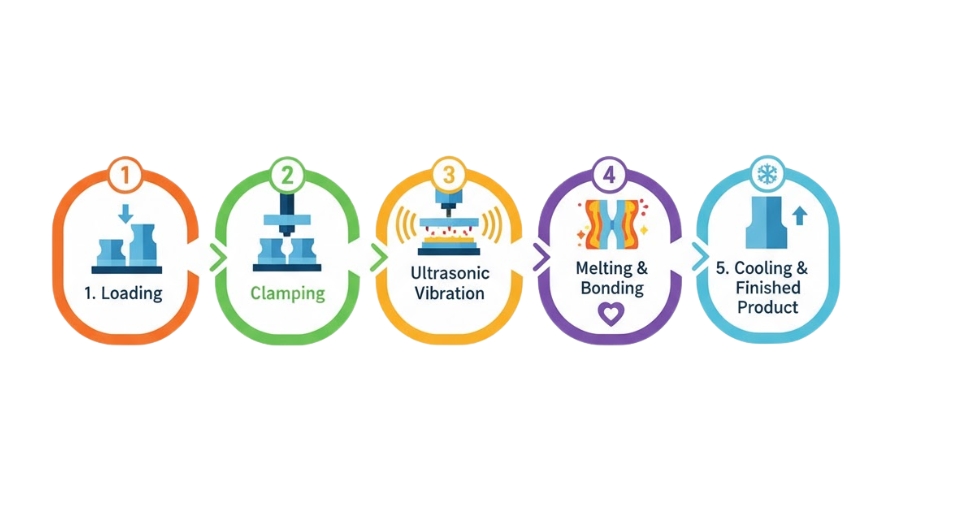
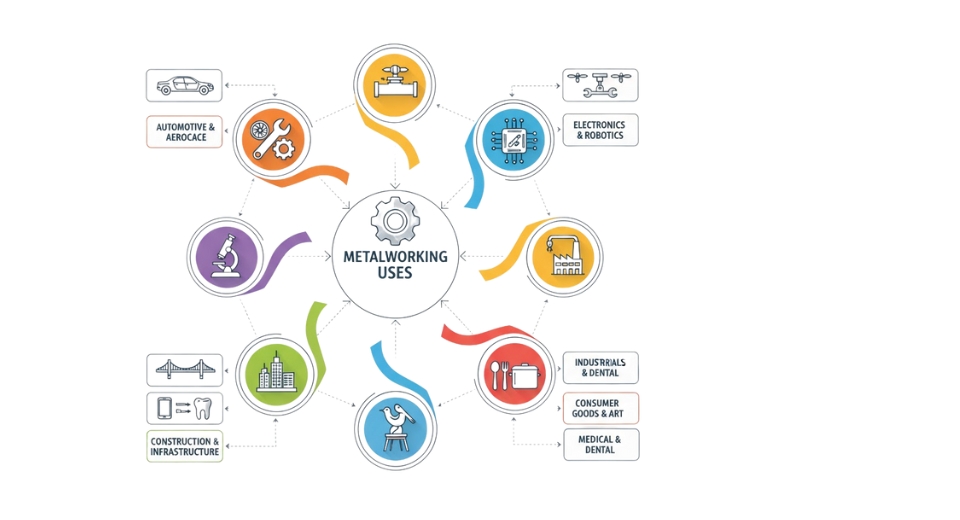
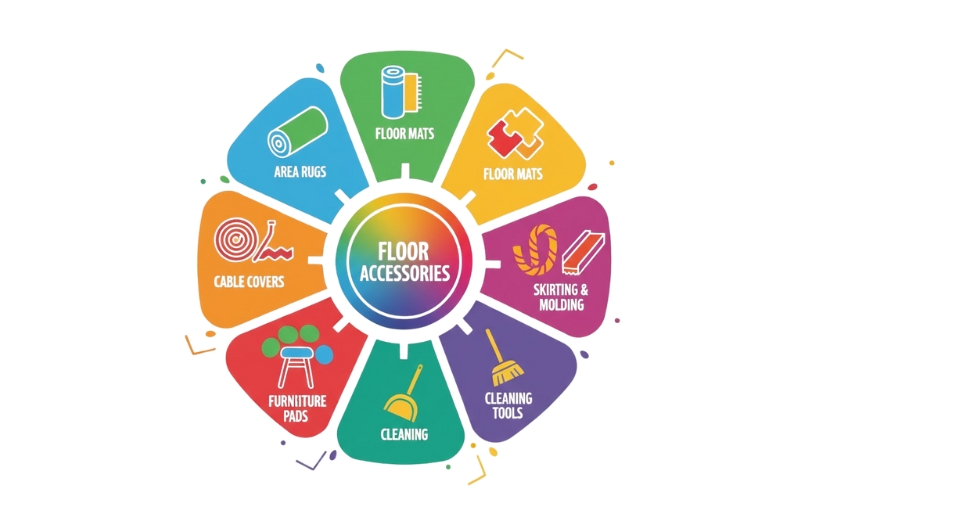
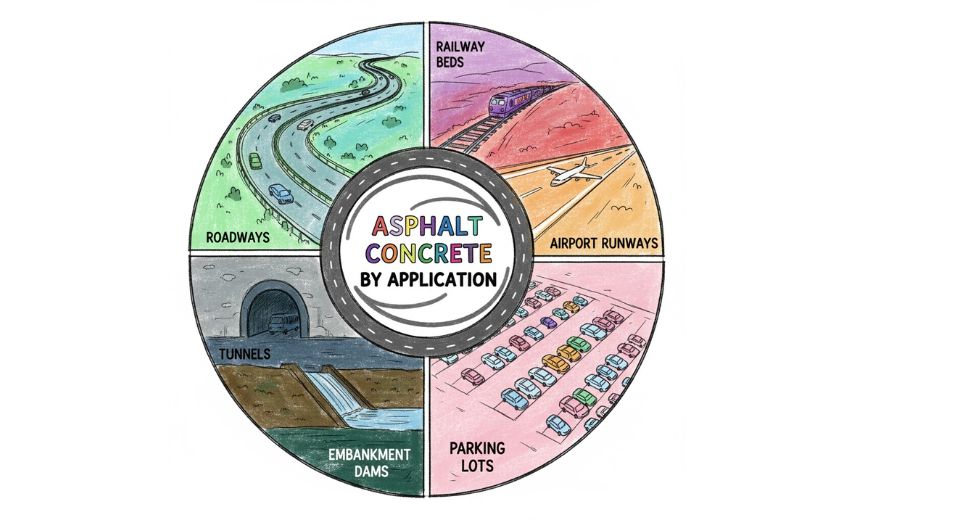

 US: +1 3023308252
US: +1 3023308252






